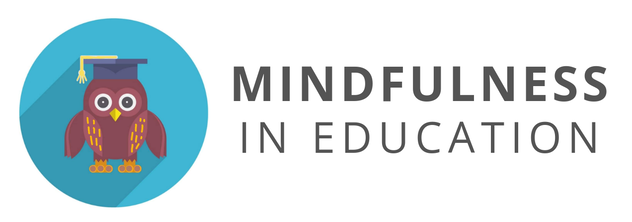ABOUT

Mindfulness in Education (MiE) is part of a growing worldwide movement to introduce Mindfulness to children via school-based programs.
NEWSLETTERS
January 2013: Mindfulness is the best Personal Development Program –
it teaches from the inside out!
This January (2013) Bobbi Allan & Shakti Burke from Mindfulness in Education presented mindfulness training to 100 Primary and High School teachers from Coomera Anglican College on the Gold Coast.
Coomera Anglican College teaches the ‘Habits of Mind’ Personal Development Program. The teachers were interested in how Mindfulness training could support the Habits of Mind. The reflections, below, on the difference between Mindfulness and other Personal Development programs, from a US Primary Teacher, inspired Bobbi to develop a model to help teachers integrate Mindfulness with the Habits of Mind Program.
Linda Wallace of Colorado, US, has taught every grade of Primary School for close to thirty years. In the past few years, she has been using Mindfulness exercises where children “focus on the breathing, their thoughts, their eating”, she says. “This has had more impact than anything I’ve seen in my whole teaching career.” First off, it helps the children academically, because they can focus their attention better and deal with all the tests they have to take these days.
Life is often hectic and unfocused for children, she says. “Students are very often distracted. Very simple things like starting each class with a bell and having students focus on their breath help train their ability to attend to a task and can help transitions be much smoother.”
The variety of exercises and practices Wallace uses – including body-scanning, paying attention while eating, visualising a safe place, and generating thoughts of loving-kindness for relatives, friends and others – also bring children physical and mental health benefits. With these techniques we can actually train children to notice tightness and pain, how stress shows up in their body. They can learn to slow down and notice their bodily sensations, including actually noticing when they are over-eating, for example.
It also helps with meta-cognition, their ability to stop and reflect on their own thinking. They are learning they are not their thoughts – that thoughts are just mental events that come and go. “Other programs”, Wallace says, “told kids to stop and think, but the kids didn’t have the resources to stop their thought processes or their rapidly rising emotions. Contemplative practices help them to stop and get a different perspective, and then make a choice.”
Many PD programs “amount to teachers telling students what steps to follow, working from the outside in. By contrast, Mindfulness practices provide a missing component, a perspective outside their regular thoughts and emotions that allows students to focus and centre and ground and calm themselves, so they can access their inner knowledge. They will have these skills for life.”
Bobbi Allan, Mindfulness in Education: www.mindfuleducation.com.au January 2013
Coomera Anglican College teaches the ‘Habits of Mind’ Personal Development Program. The teachers were interested in how Mindfulness training could support the Habits of Mind. The reflections, below, on the difference between Mindfulness and other Personal Development programs, from a US Primary Teacher, inspired Bobbi to develop a model to help teachers integrate Mindfulness with the Habits of Mind Program.
Linda Wallace of Colorado, US, has taught every grade of Primary School for close to thirty years. In the past few years, she has been using Mindfulness exercises where children “focus on the breathing, their thoughts, their eating”, she says. “This has had more impact than anything I’ve seen in my whole teaching career.” First off, it helps the children academically, because they can focus their attention better and deal with all the tests they have to take these days.
Life is often hectic and unfocused for children, she says. “Students are very often distracted. Very simple things like starting each class with a bell and having students focus on their breath help train their ability to attend to a task and can help transitions be much smoother.”
The variety of exercises and practices Wallace uses – including body-scanning, paying attention while eating, visualising a safe place, and generating thoughts of loving-kindness for relatives, friends and others – also bring children physical and mental health benefits. With these techniques we can actually train children to notice tightness and pain, how stress shows up in their body. They can learn to slow down and notice their bodily sensations, including actually noticing when they are over-eating, for example.
It also helps with meta-cognition, their ability to stop and reflect on their own thinking. They are learning they are not their thoughts – that thoughts are just mental events that come and go. “Other programs”, Wallace says, “told kids to stop and think, but the kids didn’t have the resources to stop their thought processes or their rapidly rising emotions. Contemplative practices help them to stop and get a different perspective, and then make a choice.”
Many PD programs “amount to teachers telling students what steps to follow, working from the outside in. By contrast, Mindfulness practices provide a missing component, a perspective outside their regular thoughts and emotions that allows students to focus and centre and ground and calm themselves, so they can access their inner knowledge. They will have these skills for life.”
Bobbi Allan, Mindfulness in Education: www.mindfuleducation.com.au January 2013
